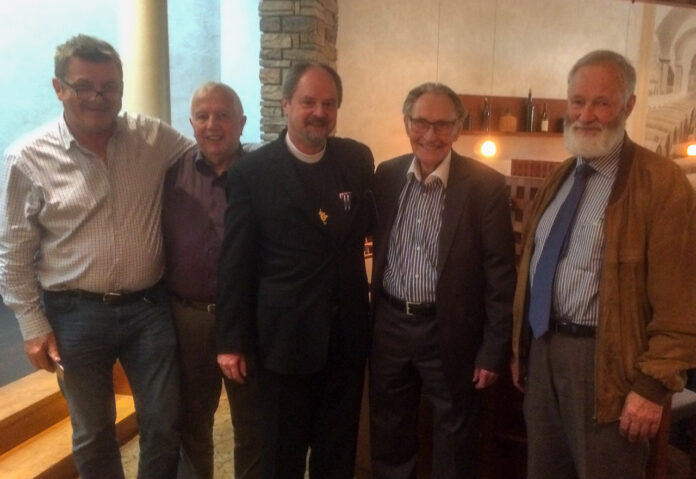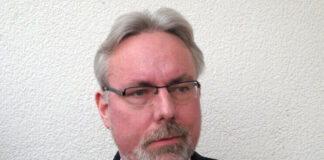
Klaus-Peter Brozatus passed away in September 2020. He was one of the greatest experts in the field of Reformation coins and medals and wrote the extensive catalogue “Reformatio in Nummis”. In an 2011 interview with Daniel Harmelink of the International Association of Reformation Coins and Medals (IARCM), Brozatus talked about his passion for this numismatic area.
How Everything Began
IARCM: Mr. Brozatus, what were your first experiences with Reformation coins and medals in your work as a numismatist?
K.-P. Brozatus: My connection with numismatics began in 1958 when I started gathering every coin I could find. In 1967 I began to produce so-called galvanos, or reproductions of coins and medals prepared electrolytically from copper and lead and furnished with appropriate finishes. These galvanos were produced for collectors and museums as well as for my own collection.
My first contact with coins and medals dealing with Martin Luther and the Reformation was in 1981. The museum of Martin Luther’s birthplace in Lutherstadt Eisleben asked me whether I could produce copies of its collection of Reformation coins and medals consisting of about 180 pieces. In those days, Fritz Ebruy was the administrator of the museum in Lutherstadt Eisleben. He had at the same time begun to create a catalog of the Luther / Reformation coins and medals of the Eisleben collection which, with the assistance of my knowledge in numismatics, was published in 1984.
This was my first experience with coins and medals of Martin Luther and the Reformation. Also, in the same year, the museum “Staatliche Lutherhalle” in the Lutherstadt Wittenberg asked me for assistance in the formation of its display for the 500th birthday of Martin Luther in 1983. I created approximately 400 galvanos of this collection under the direction of Director Elfriede Starke. The museum Schloss Wilhelmsburg in Schmalkalden also asked me to produce approximately 100 galvanos of coins and medals of their collection. Further museums also inquired about my services. And so, within a short time I stood before the task of producing over 1000 copies of Reformation coins and medals. Through my work in producing these galvanos, a renewed interest in the Reformation – from a numismatic point of view – began, a study which I dedicated myself to over the last 30 years. Besides all this, in 1988 I began work as a free colleague of the coin-cabinet of the Schloss Friedenstein in Gotha.
In 1990 the end of the GDR brought new legal directions for the preparation of galvanos. These new rules affected how galvanos were to be crafted – a career I had enjoyed for over 23 years. Through it the necessity arose for me to find new directions in my profession. So, in 1991 I became self-employed and began work with the Niedersächsisches Münzkabinett der Deutschen Bank in Hannover (today Münzkabinett des Nidersächsischen Landesmuseums Hannover). In 1983 the bank had bought the collection of about 40,000 coins from the coin collection of the Duke of Braunschweig. For seven years, I was entrusted with evaluating the coins and medals of this collection. Each month I worked for one week in Hannover, and then at home at the computer for the remainder of each month.
In 1998 I received a call from the Lutherhalle Wittenberg (the name “Lutherhalle” changed to “Lutherhaus” in 2003). Dr. Stephan Rhein, Director of the foundation belonging to the UNESCO world cultural heritage Luthergedenkstätten in Saxony-Anhalt asked me whether I would consider processing the Reformation historical coin and medal collection of the foundation. I explained that my work in Hannover would conclude in August and I would be available to work for the foundation after that. Dr. Stefan Rhein asked that after reorganizing the collection, and evaluating the coins and medals in the collection, to also create a Bestandskatalog. Further, I was asked to expand the collection systematically through purchases of new pieces. So approximately 550 coins and medals were added from 2002 until today through purchases and also donations.
After the end of the reorganization and evaluation of the coin collection, I began in 2002 to work on compiling a catalogue of the collection. During this time, I worked about 3 to 4 days per month in Wittenberg, and the remaining time each month at the computer at home. The listing of the about 1650 coins and medals, without consideration of duplicates (the collections in Wittenberg and Eisleben comprise altogether over 3200 pieces, including the duplicates) did not proceed as quickly as first thought.
I hope to be able to complete the Bestandskatalog in the next four or five years. After the death of my dear wife in 2008, it is no longer possible for me to dedicate as much time to this work as previous. Nevertheless, I am confident that I will be able to complete the catalogue. With God’s aid, I hope to publish the catalog in 2015 or 2016, in preparation for the 500th anniversary of the beginning of the Reformation.
For Brozatus, Interdisciplinary Collaboration Is Key
IARCM: How is it possible for you to produce such an extensive catalogue—a task that demands knowledge of so many different disciplines and areas of expertise?
K.-P. Brozatus: Many questions come up while cataloging Luther and Reformation coins and medals that I don’t have the ability to answer authoritatively – especially the areas of history, theology, and Latin (my single training in Latin was during my instruction in the Gymnasium). So, I often consult with Dr. Markus Altmeyer, an instructor at the University of Potsdam, a comrade-in-arms of Latin texts. When it comes to questions about history I often consult with the Museum Director of Luther’s Death-house in Eisleben, Dr. Christian Philipsen. And the Director of the Luther Memorial Foundation of Saxony-Anhalt, Dr. Stefan Rhein, always has an open ear for all my questions. Additionally, for theological questions, I have in Dr. Rainer Opitz, a friend in Potsdam, who graciously supports the cataloging project in every way possible.
IARCM: Can you estimate the amount of coins and medals commemorating Martin Luther and the Reformation over the course of the last 500 years?
K.-P. Brozatus: I assume that more than 95% of all coins and medals produced commemorating Luther and the Reformation are from Germany. Most of the remaining pieces were minted in Switzerland, Sweden, France, the Netherlands, and the United States. In Great Britain, the Reformation developed in a very different direction as a national Anglican Church. Therefore, there are comparatively few British Reformation medals. Other countries that produced only a few medals commemorating the Reformation can be found in Hungary, Czechoslovakia, and Poland.
I believe approximately 6,000–8,000 Reformation coins and medals have been produced, including medals commemorating Reformers (such as Philipp Melanchthon, and Jean Calvin), Lutheran (Protestant) churches and organizations, university professors, as well as other personalities connected to the Reformation (Daniel Friedrich Schliermacher, Dietrich Bonhoeffer, etc.).
IARCM: Which century do you think was the “pinnacle” in the history of Reformation Numismatics?
K.-P. Brozatus: Perhaps the 16th century or the 18th. However, the 17th century was not the best for the design and production Reformation coins and medals. Anniversaries before, during and after the Thirty Years War (1618–1648) produced only a few coins and medals, mostly from Saxony only. Also, the 19th century was determined more through its manufacturing of medals then through its artistic creativity and meaning. Today, we have a new phenomenon with the new revival of the art-medal in the last quarter of the 20th century.
IARCM: How do you distinguish between coins and medals of the Lutheran Reformation and coins and medals of the person of Martin Luther?
Mr. Brozatus: Until 1846, there were no medals (with the exception of pieces commemorating his death in 1546) that related solely on the person of Luther himself. To be sure, Luther was represented on numerous medals, but always in the context of the events of the Reformation. That changed in 1846 on the occasion of the 400th anniversary of his death. From then on, medals that focused on the man Martin Luther appeared in much greater numbers (especially in 1883 on the occasion of the 400th anniversary of Luther’s birth). This development continues until today.
IARCM: Can you cite, Mr. Brozatus, four or five outstanding coins or medals on Martin Luther and the Reformation in regards to their beauty, the skill of the medalist, or their historic significance?
K.-P. Brozatus: That is a very difficult question to be answered. Each period of the Renaissance, Baroque, Klassizismus to the modern produced outstanding examples.
At the time of the Renaissance, one the most famous German medals was created by the goldsmith Hans Reinhardt the Elder of Leipzig in 1544 – the so-called Trinity medal. It was commissioned by Duke Moritz of Saxony in his attempt to emphasize the doctrinal unity between Catholic and Protestant church bodies.
In 1717, during the Baroque era, Christian Wermuth, the famous medalist of Gotha, created a medal presenting the image of the dream Elector Friedrich III of Saxony had on the night before Luther nailed the 95 Theses on October 31, 1517. The many details of the dream are captured on a 44.5mm diameter, including the burning of Jan Hus. [Künker A297 Lot 3788]
A large 140mm diameter medal from 1917 by Martin Götz commemorates “Martin Luther as a Reformer of Family Life.” Luther is portrayed as father in the circle of Katharina von Bora and their children.
There would be many other medals whose discussion would be worthwhile here. They would exceed, however, the scope of this interview. In the catalogue I am presently working on, numerous examples will be able to be found.
IARCM: Mr. Brozatus, I thank you for this interview.
Klaus-Peter Brozatus passed away in September 2020, here you can read the German obituary written by Thomas Arnold and Uta Wallenstein.
And here you can find the website of the International Association of Reformation Coins and Medals (IARCM).
CoinsWeekly presented both, the catalog Reformatio in Nummis and the catalog of the Rainer Opitz Collection bearing the same title.



